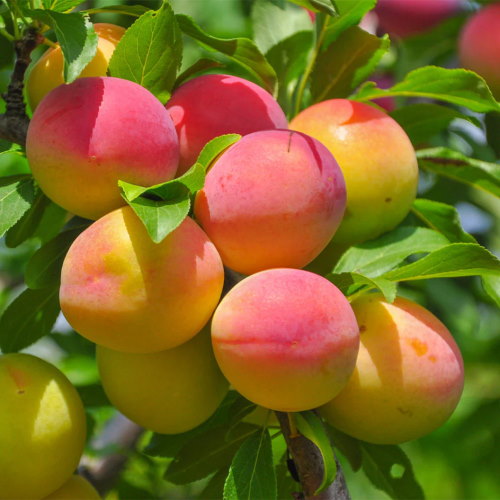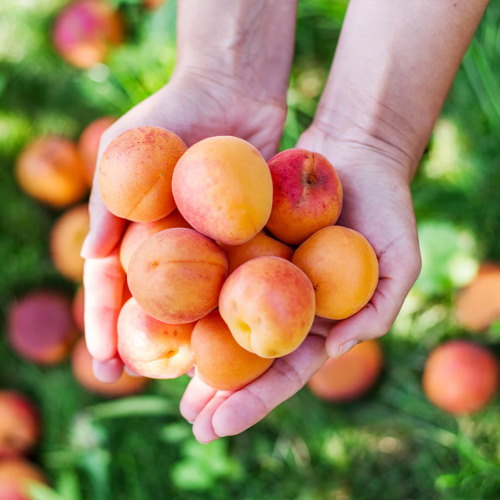How to grow an apricot tree for yearly summer harvests of delicious sweet fruits
A guide to growing apricots successfully, with expert tips on everything from planting trees to picking fruits
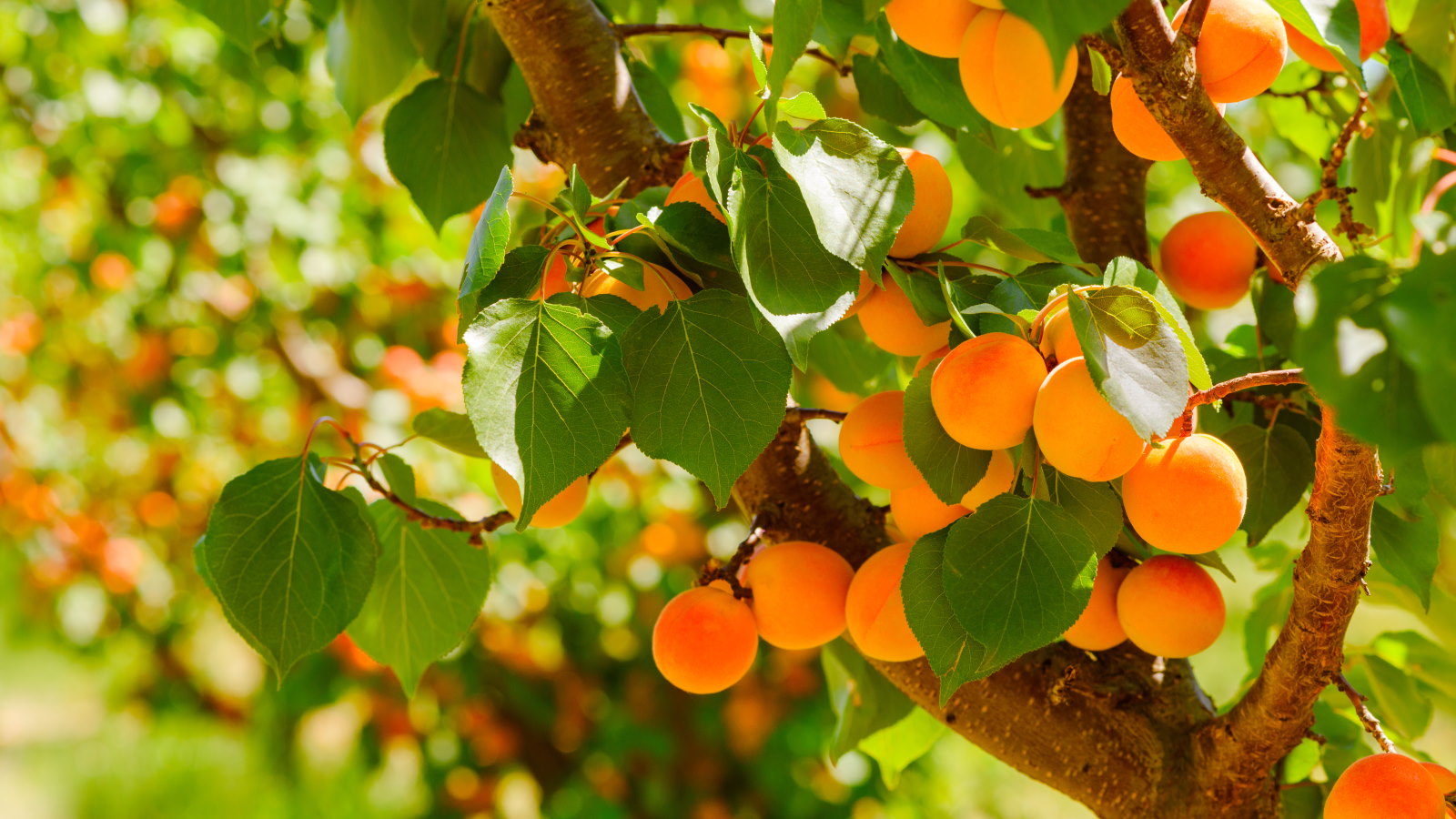

Plucking a fresh apricot straight from the tree in summer can be a real treat, as homegrown fruits taste far superior to any from stores. They may be fruit trees associated with warm climates and hot summers but apricot trees can realistically be grown in a sunny backyard.
Apricots are hardy trees and modern advancements in breeding mean there are varieties now suited to milder climates and growing in containers. Plant them in a sunny and protected spot and apricots can provide delicious harvests for crumbles, cakes, tarts, jams, and more.
Apricots are also great fruit trees to train against warm walls or grow indoors. To get the best crop they will require annual maintenance to keep them vigorous and benefit from protecting the delicate blossom in some climates. Any work involved, however, is worth it for the sweet fruits each summer.
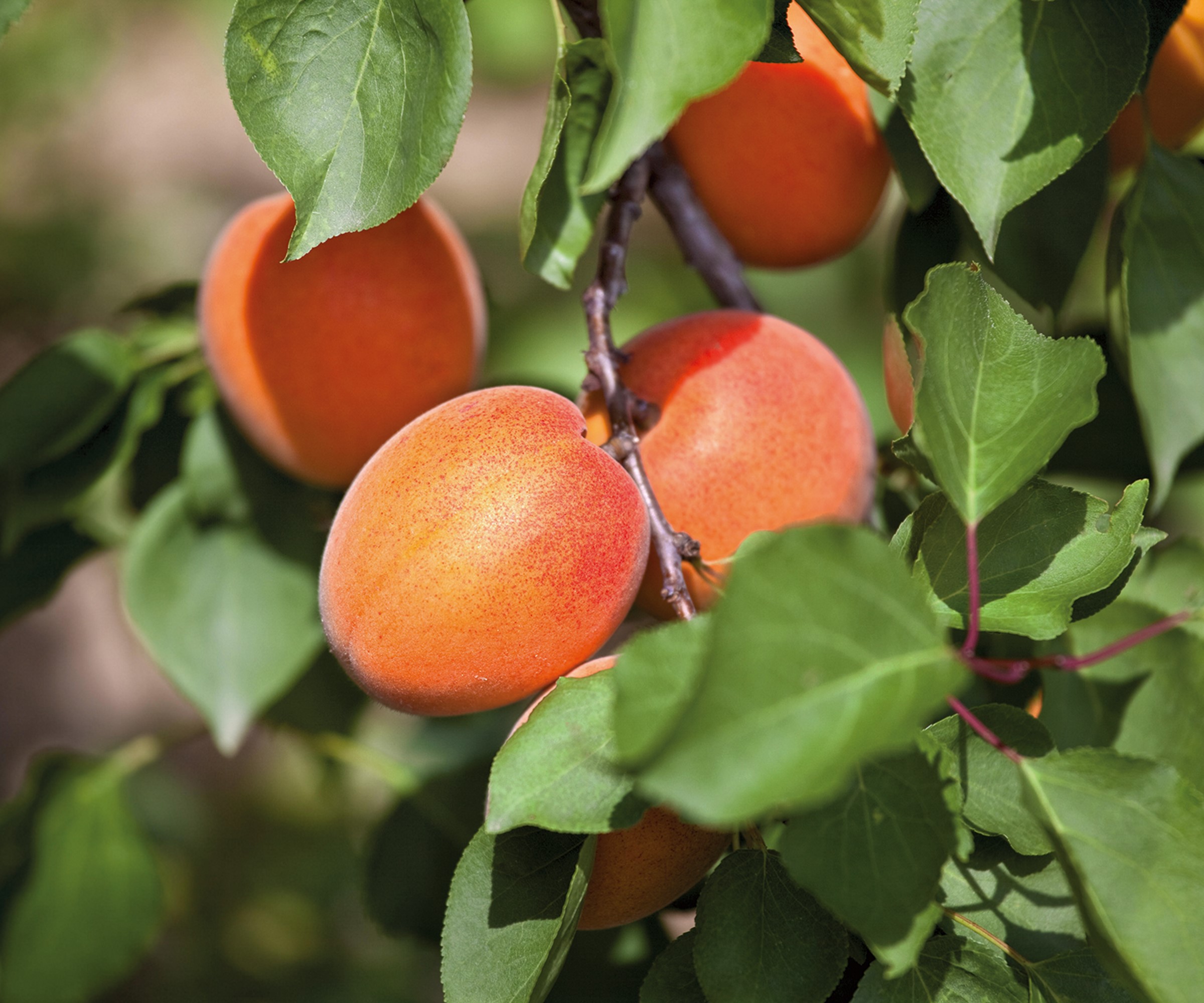
How to grow an apricot tree - our expert guide
Apricots are historic fruit trees. They originally hail from China but are now grown around the world. They are beautiful and fast-growing fruit trees, with gorgeous spring blooms and fruit in shades of yellow, orange, and red that ripen through the summer, depending on the variety.
They are not the easiest fruit trees to grow as they like certain conditions and can be affected by cold. However, apricot trees are adaptable in cooler climates and most varieties are self-pollinating. It means you can get a crop with just one tree, but any harvests will be boosted by another tree nearby.
Apricot trees can reach 20 feet tall and plants are commonly grafted onto rootstocks to control their vigor. It is important to pick the right variety for your US hardiness zone and yard size. Thanks to grafting, there are apricots on dwarf rootstocks that can be grown as fruit trees in containers or small backyards.
Let's look closely at how to grow an apricot tree, starting with finding the best spot to plant an apricot tree and then how to care for them to have healthy fruit trees and great harvests.
Apricot tree planting tips
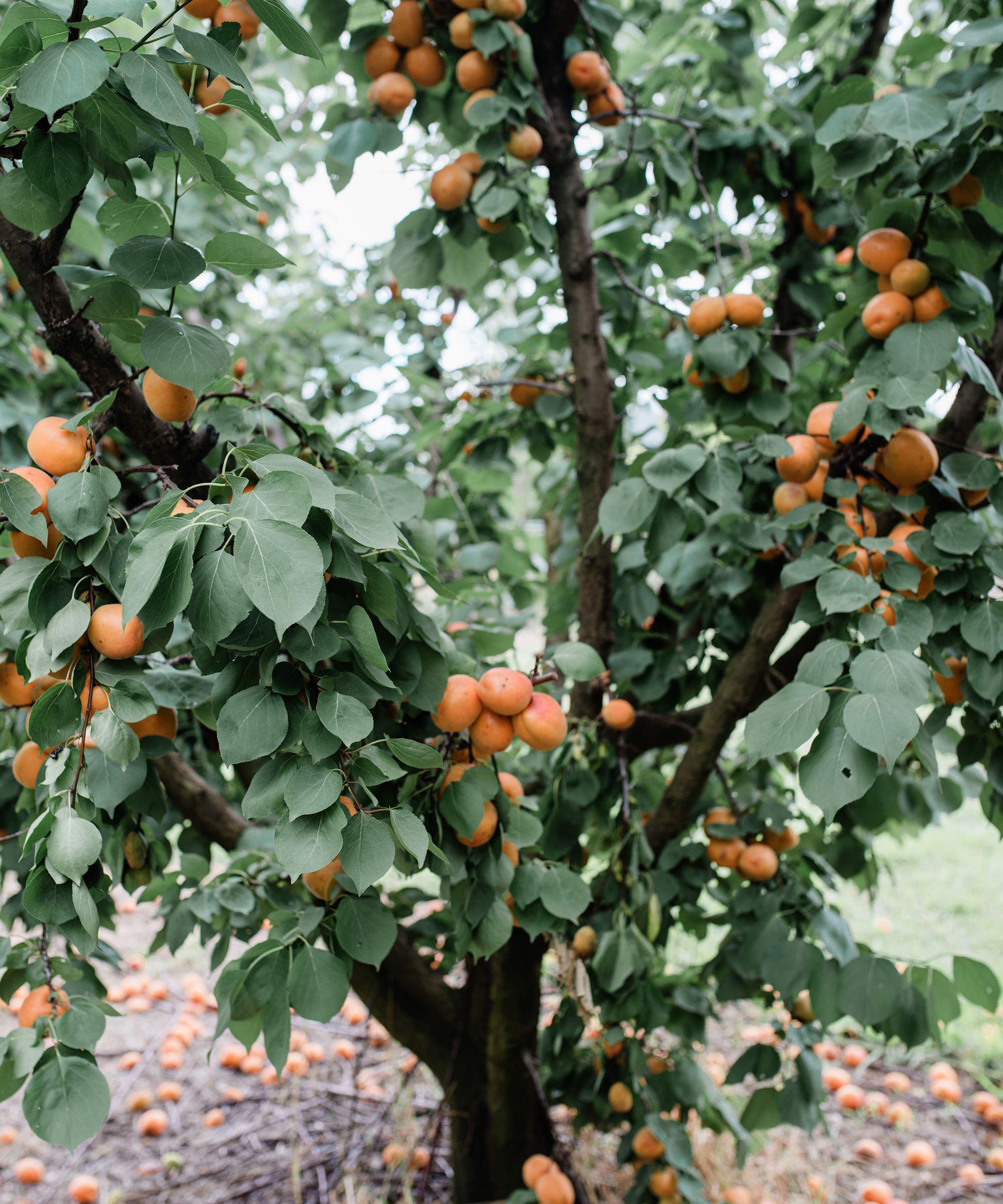
The first thing you need to know about how to grow apricot trees successfully, and one of the key factors to happy trees, is the best position to plant them. Apricots are hardy in US hardiness zone 5 to US hardiness zone 8 and planting them in a sunny spot that gets 6-8 hours of sunlight daily is critical to their happiness.
In the ideal location, apricots can be free-standing trees. However, they are versatile fruit trees that are ideal for training in a fan-shape to take advantage of the micro-climate that comes from being grown against a south or south-west facing wall - where trees can soak up lots of extra warmth.
In colder US hardiness zones, apricot trees can be grown as part of greenhouse ideas for indoor fruit. Planting apricot trees in frost pockets or cold spots would be a mistake. As apricot trees flower in early spring, the cold can kill the blooms and spoil any hopes of a fruit harvest.
As well as lots of warmth, apricot trees want fertile, well-draining soil. They do not like sitting too wet for long periods - if you have a heavier soil type, add lots of organic matter to improve the structure and drainage of the planting site.
Apricot trees are commonly available as bare-root or container-grown plants. When you plant fruit trees depends on the route you choose, as bare root trees are available in spring and container-grown apricot trees can be purchased year-round.
You should plant the fruit tree during dormancy in the fall or spring. Avoid planting fruit trees in summer as it will require lots of watering during the warmer months to establish any tree.
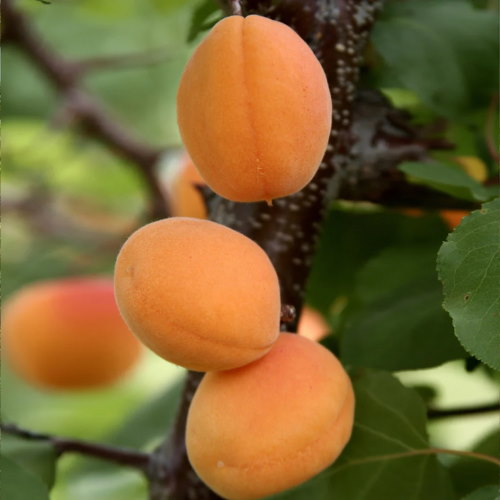
Moorpark apricot trees are renowned for growing large and sweet fruits - and these trees are capable of fruiting in their first year.
Apricot tree care tips
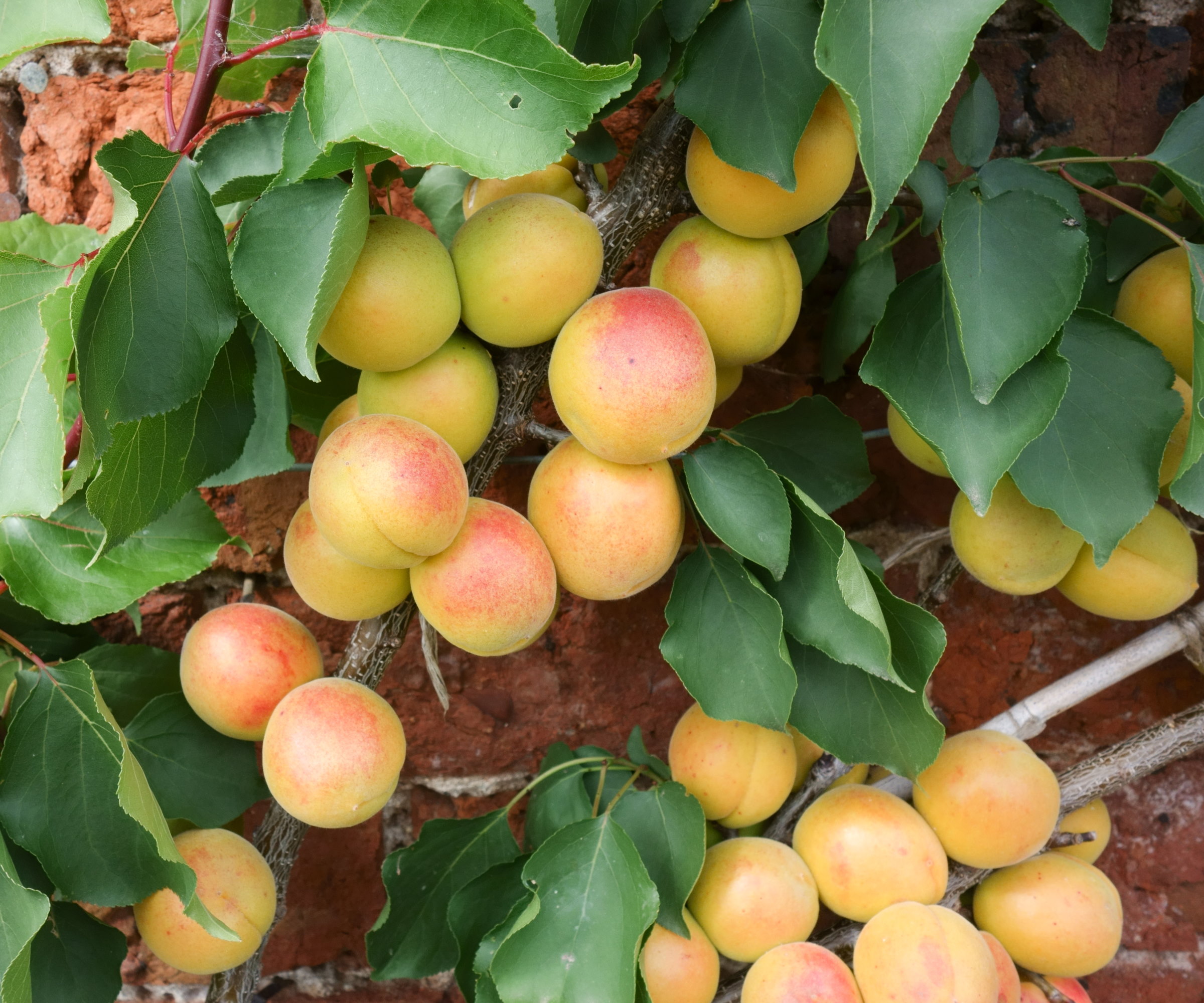
- Watering - Water apricot trees for the first year to get established in their new home. They want regular deep watering for the first growing season, however, in the years after that, they are likely to only need watering in prolonged dry spells. Trees planted against warm walls, in greenhouses, or containers will need more regular watering than established free-standing trees. Watering plants becomes most important when the fruits are developing. A lack of moisture at that vital period can cause the fruits to drop prematurely.
- Fertilizing - Mulching plays an important role in ensuring healthy and vigorous apricot trees. Susan Poizner, a fruit tree expert and founder of Orchard People, hails the importance of giving trees a three-inch layer of ‘quality compost’ every spring. ‘When deciduous fruit trees come out of dormancy, they use energy hidden in their wood and root system. But that will run out by the beginning of the summer,’ says Susan. ‘At that point, the hope is that the microbe community in the soil will have broken down the organic matter in the compost. Once they do, all the nutrients from the compost will be in a plant-available form that fruit trees can take in.’ To provide extra nutrients, fertilize fruit trees with a specific fruit tree fertilizer each spring. This is recommended if the tree shows a lack of vigor. It can also be an important step in getting an apricot tree to fruit.
- Pruning - Apricots are stone fruits and should be pruned during the spring or summer when they are actively growing. This differs from pruning fruit trees in winter, which is reserved for the likes of apples and pears. Stone fruits are pruned when the sap is rising as they are susceptible to diseases like silver leaf and canker if pruned in winter. As for how to prune an apricot tree, focus annually on removing dead, diseased, damaged, or crossing branches and creating an open center with a mix of productive one, two, and three-year-old branches.
- Harvesting - Protecting flowers from frost with horticultural fleece or frost cloth in early spring can help to ensure a good apricot harvest. Hand-pollinating flowers can also boost any potential yield and is essential when growing indoor fruit trees. Apricots ripen from June to August, depending on the variety, as the color develops to its final yellow, red, or orange. A ripe apricot should be slightly soft and the fruits should separate from the tree easily when twisted. Take care harvesting apricots as they are delicate fruits, and avoid pulling too hard - if the fruit doesn’t come away, wait and try again when it ripens further.

Susan is an urban orchard-ist, ISA Certified Arborist, and the author of two fruit tree care books, Growing Urban Orchards, available at Amazon and Grow Fruit Trees Fast, also available at Amazon. She is the creator of the award-winning fruit tree care training website Orchard People and trains global fruit tree growers through her online courses

A certified organic 5-5-2 fertilizer for planting fruit trees or yearly feeding of actively growing fruit trees and vines. With quick-release nutrients that feed for months.
FAQs
How long does it take to grow apricots?
Apricot trees usually start to produce fruit three to five years after planting. Fruit trees in containers often crop earlier and you may get a harvest after two years.
Can you grow apricot trees in containers?
Apricots on dwarf rootstocks can grow in containers and, as mentioned above, you can benefit from earlier fruiting. Apricot trees need large containers at least 18 inches in diameter with drainage holes in the bottom. Fill the container with a free-draining potting mix and place the pot in a sunny and sheltered position. Apricots in containers can be moved into a greenhouse or conservatory over winter to protect the blossom from frost.
Apricots belong to the same family as peaches, but there are differences between the two fruits. Most notably, peaches are juicier and sweeter due to their higher water and sugar content. Apricots are also sweet, but firmer in texture, smaller in size, and ripen slightly earlier than peaches.
If you want to harvest homegrown peaches, see our guide to how to grow and care for peach trees - you can even grow a peach tree from seed if you have the patience to wait for the fruits.
Sign up to the Homes & Gardens newsletter
Design expertise in your inbox – from inspiring decorating ideas and beautiful celebrity homes to practical gardening advice and shopping round-ups.

Drew’s passion for gardening started with growing vegetables and salad in raised beds in a small urban terrace garden. He has worked as a professional gardener in historic gardens and specialises in growing vegetables, fruit, herbs, and cut flowers as a kitchen gardener. That passion for growing extends to being an allotmenteer, garden blogger, and producing how-to gardening guides for websites. Drew was shortlisted for the New Talent of the Year award at the 2023 Garden Media Guild Awards.
-
 How to grow sassafras – for a low-maintenance native tree that can even be planted in shady yards
How to grow sassafras – for a low-maintenance native tree that can even be planted in shady yardsFor an easy-to-grow North American tree, you will not find much better than sassafras
By Thomas Rutter
-
 'Big results before you know it' – Experts urge you to use the ‘Take Away 10’ method for simple decluttering with zero decision fatigue
'Big results before you know it' – Experts urge you to use the ‘Take Away 10’ method for simple decluttering with zero decision fatigueIt can cut hundreds of items from your home in just a few weeks
By Ottilie Blackhall
